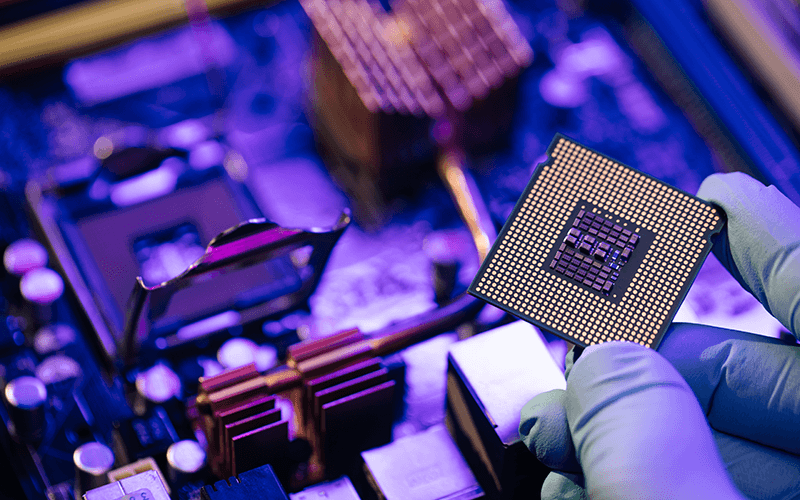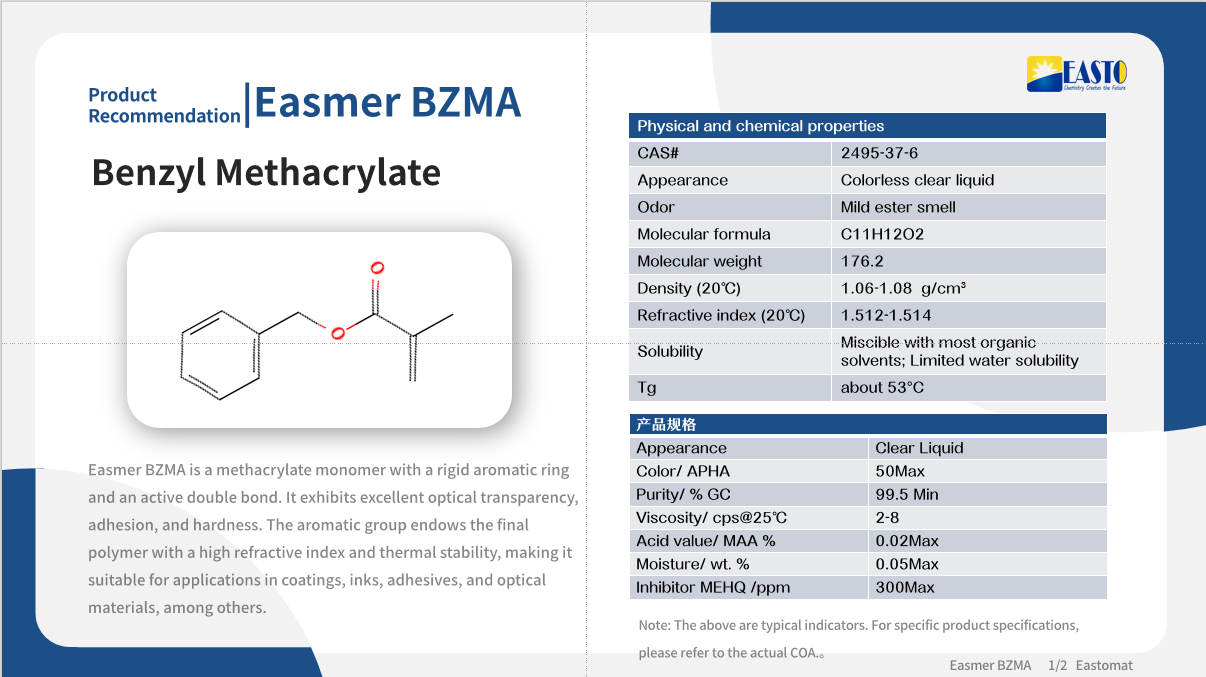Dipentaerythritol Hexaacrylate (Easmer DPHA) FAQs
Release time:
2025-07-27
Introduction:
Dipentaerythritol Hexaacrylate (DPHA, CAS#29570-58-9) is a foundational monomer in radiation curing technology. Its high functionality and reactivity are essential for achieving excellent performance in various coatings, inks, and adhesives. This article aims to answer common questions about our product, Easmer DPHA, in the form of a simulated dialogue between a customer and our company's technical support staff, providing precise and technically rigorous insights.
Customer: Good morning. I have some questions about your Easmer DPHA product. We are evaluating its suitability for high-performance coating applications and would appreciate some detailed technical clarification.
Technical Support: Good morning. I'd be happy to assist you. Please feel free to ask your questions. Our goal is to ensure you have a comprehensive understanding of Easmer DPHA's performance and proper handling.
Customer: Okay. Let's start with the basics.
Question 1: What exactly is Easmer DPHA? How do its key molecular characteristics influence its performance?
Technical Support: Easmer DPHA, or Dipentaerythritol Hexaacrylate (CAS No.: 29570-58-9), is a high-functionality acrylate monomer. Chemically, it is primarily composed of a mixture of dipentaerythritol pentaacrylate and hexaacrylate. The name "hexaacrylate" refers to the theoretical maximum of six acrylate groups per molecule, which contributes to its formation of a high cross-link density upon polymerization.
Its key molecular characteristics include:
High Functionality: Easmer DPHA has an average functionality close to 6, meaning it possesses a large number of active double bonds. This characteristic is crucial for achieving rapid curing under ultraviolet (UV) or electron beam (EB) irradiation and forming a dense cross-linked polymer network.
Steric Hindrance: The dipentaerythritol core provides a relatively rigid and bulky structure. While offering high functionality, this molecular geometry can influence viscosity and chain mobility during the polymerization process, thereby affecting the final film properties.
VOC-Free: As a reactive monomer, DPHA fully integrates into the polymer matrix during curing, eliminating the need for solvents and thus contributing to low or zero VOC formulations.
These properties collectively impart excellent performance to cured films, including high hardness, excellent abrasion and scratch resistance, and good chemical resistance.
Customer: That clearly explains its basic structure. Next, we are particularly interested in its physical properties.
Question 2: Could you elaborate on the typical physical properties of DPHA, such as viscosity, and how these properties affect formulation?
Technical Support: Certainly. Easmer DPHA typically presents as a clear, colorless to light yellow/orange liquid. Its viscosity is a key characteristic, generally ranging from 3000 to 7000 cP at 25°C. Certain variants or specific grades may exhibit slightly higher viscosities, up to 10,000 cP. The inherently higher viscosity of DPHA compared to lower functionality acrylates can be attributed to its molecular size and high functionality, leading to greater intermolecular interactions. Product specifications can be found in the product TDS.
In terms of formulation impact:
Viscosity Control: The inherently high viscosity of Easmer DPHA often requires its combination with low-viscosity monomers (diluents) to achieve the desired application viscosity for coatings and inks. Careful selection of these diluents is crucial for maintaining optimal curing speed and final film performance.
Film Hardness: Easmer DPHA's high glass transition temperature (Tg), typically around 90°C, means that very hard and rigid films can be formed after curing. This makes it an excellent choice for applications requiring high surface durability.
Wetting and Leveling: Despite its higher viscosity, DPHA-containing systems can exhibit good wetting and leveling properties with proper formulation, attributed to its reactivity and ability to reduce surface tension during curing.
Customer: Thank you. This gives us a better understanding of its physical characteristics. Now, let's discuss its practical applications.
Question 3: In which specific application areas does Easmer DPHA excel? What performance advantages does it offer in these areas?
Technical Support: Easmer DPHA's unique combination of high reactivity and resulting film properties makes it highly valuable in several high-performance areas, primarily in UV/EB curing systems.
Its main application areas include:
UV/EB Cured Coatings:
Wood Coatings: For flooring, furniture, and cabinets, DPHA provides excellent abrasion, scratch, and chemical resistance, as well as rapid curing, which is critical for high-speed production lines.
Plastic Coatings: Used for automotive interiors, electronic components, and consumer goods, it imparts durable, hard, and often aesthetically pleasing surfaces.
Metal Coatings: Provides protective and decorative properties for industrial applications.
Optical Coatings: Its clarity and hardness make it suitable for hard coats on optical films and displays.
UV/EB Cured Inks:
Printing Inks: In offset, flexo, screen, and gravure printing, DPHA contributes to fast curing, excellent adhesion, high gloss, and rub resistance, which are crucial for high-quality graphics and packaging.
Solder Masks: Its chemical resistance is highly beneficial in electronic applications.
UV Curable Adhesives: Provides strong, fast-curing bonds for various substrates, especially where high bond strength and environmental resistance are required.
Electronics: Used in formulations for photoresists, encapsulants, and micro-optical components for displays, leveraging its precise curability and durable polymer structure.
The consistently observed performance advantages are: extremely fast curing speed, high cross-link density, excellent hardness, superior abrasion and scratch resistance, outstanding chemical resistance, good adhesion to various substrates, and low shrinkage. These characteristics make Easmer DPHA a preferred choice for demanding applications requiring robust and durable surfaces.
Customer: The range of applications is truly impressive. Finally, I have a few more technical questions.
Question 4: Given Easmer DPHA's higher viscosity, what adjustment strategies are available for formulation design?
Technical Support: Generally, we have three recommendations:
Compounding with Low-Viscosity Monomers: Blending Easmer DPHA with low-viscosity monofunctional or difunctional monomers (such as Easmer IBOA, Easmer HDDA, Easmer TPGDA) is the most common method to reduce the overall viscosity of the system.
Appropriate Heating: During operation and application, appropriately heating the formulated system (e.g., to 40-60°C) can significantly reduce DPHA's viscosity and improve flowability.
Selecting Modified Products: Opt for modified DPHA products with relatively lower viscosity, such as ethoxylated PETA (Easmer PPTTA), which maintains high functionality while having a more flexible molecular chain and lower viscosity.
Question 5: How can the issue of brittleness in Easmer DPHA cured films be resolved?
Technical Support: This is a typical issue for highly cross-linked systems. Please adjust according to this plan:
This may be caused by excessively high functionality (>30%). Please add 15-20% monofunctional monomer (e.g., Easmer LA or Easmer IBOA), or adjust the proportion of polyurethane acrylate oligomers in the formulation.
It could also be caused by too fast a curing rate. You can reduce the light intensity to 80-120 mW/cm².
Question 6: Does Easmer DPHA comply with RoHS 2.0 and REACH regulations?
Technical Support: The current product complies with:
RoHS 2.0: Cd/Pb/Cr⁶⁺/Hg/PBBs/PBDEs are all undetected (ICP-OES detection limit 0.1ppm).
REACH: SVHC notification has been completed (CAS 29570-58-9), and it does not contain >0.1% CMR substances.
Customer: This has been very helpful and comprehensive. Thank you for your detailed technical explanations. We now have a much clearer understanding of Easmer DPHA.
Technical Support: You're welcome. Our technical team is always available to provide further support if you require it during your evaluation or implementation phases. We are committed to helping our customers safely and effectively utilize our products.
Previous Page
Previous Page
Latest News
Get a Free Consultancy
NANTONG EASTO MATERIALS TECHNOLOGY CO.,LTD.

No.118,Zhujiang Rd.,Juegang St.,Rudong County,
Nantong City,Jiangsu Province,226400,China




 2025-07-27
2025-07-27







